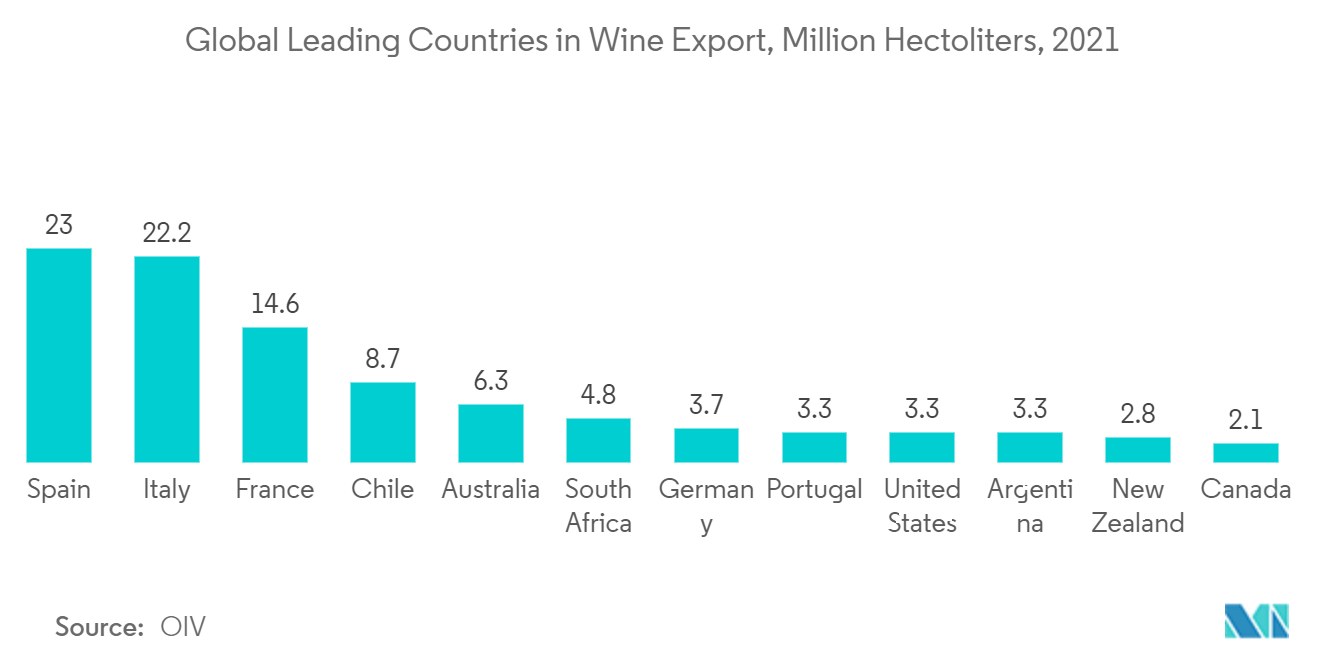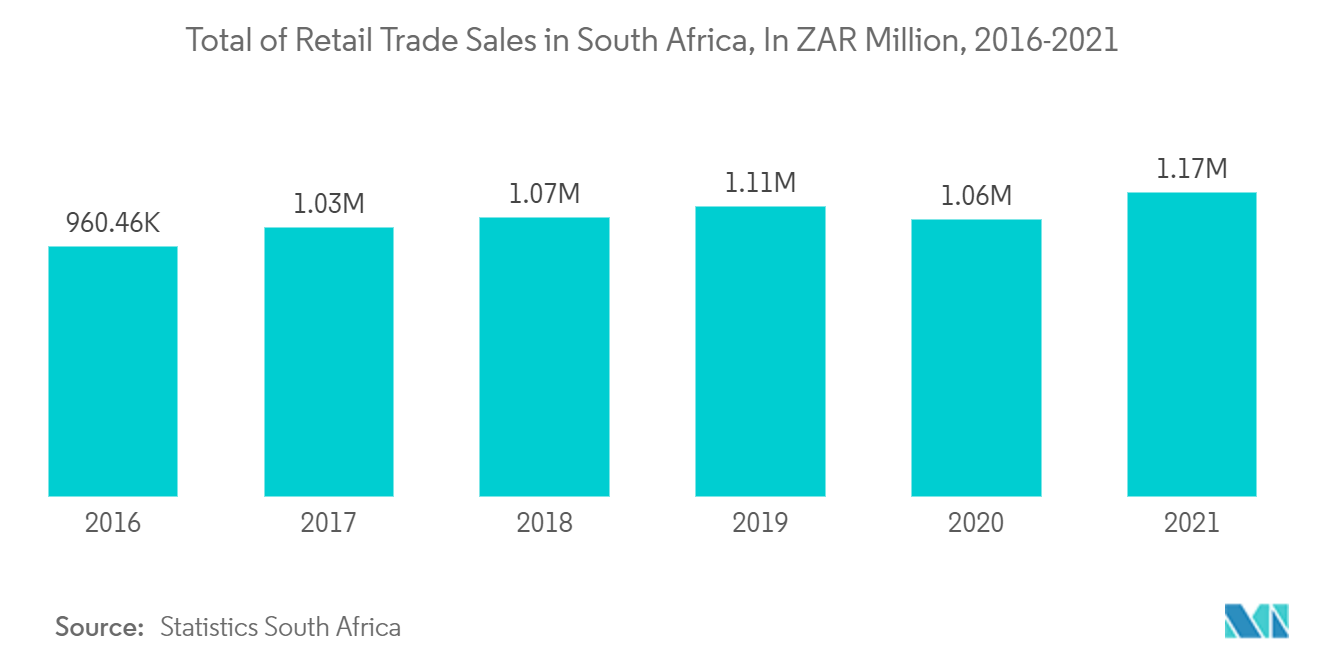Market Trends of Africa Packaging Industry
This section covers the major market trends shaping the Africa Packaging Market according to our research experts:
Glass Bottles to Drive the Market Growth
- Glass containers and bottles are widely used by end-user industries like pharmaceuticals, food and beverage, and wine. As more and more population of the region is turning toward eco-friendly solutions to increase their contribution, glass packaging is expected to grow in the region. Moreover, glass packaging is seen as an endless recyclable alternative to plastic packaging. Glass can be 100% recycled and reusable without losing quality.
- South Africa is a wine-consuming country. Although the international trend is shifting toward wine in cans, the country is expected to continue to be a strong glass market for a significant amount of time before it can follow.
- The African glass bottles and container market is highly competitive, and the players who fail to streamline their operations are exiting the business. Nampak, a South Africa-based diversified packaging manufacturer, has been forced to sell its glass business due to high fixed costs and expenditures, leading to inadequate financial returns. It was sold to Isanti Glass (Kwande Capital-owned) for ZAR 1.5 billion (USD 125 million).
- One of the significant drivers of glass bottles is the growing drive by the local tourism industry to stop using plastic bottles. This is expected to create a massive opportunity for companies to produce Glass in the region. Moreover, according to Glass Recycling Company (TGRC), the current glass recycling rate in South Africa is 44%, which further adds to the market's growth.
- Furthermore, the wine industry in South Africa is spread across several cultivation areas. According to the industry body, South African Wine Industry Information & Systems (SAWIS), the wine grape crop is estimated to be 1,378,737 tonnes 2022. It is 5.5% lower than the crop for 2021, but it is higher than the fi)ve-year average of 1,346,024 tonnes.
- The South African wine and brandy industry is continuing to rebuild after two years of severe disruptions due to domestic sales bans and global trade barriers; the industry has revised its strategic plan (WISE) towards 2025, which includes a specific focus on global and local market access, transformation, and sustainability. The framework and key performance indicators are also included in the recently signed Agriculture and Agro-processing Master Plan (AAMP). This can ensure a far more favorable production and trading environment for wine within the broader agricultural sector. According to data published by Vinpro, South Africa's total wine export volume grew by 22% to 388 million liters in 2021.

Beverage Industry to Lead the Market Growth
- Beverages hold the maximum market share in the market studied. With consumers getting increasingly careful about what they consume and what material is packaged, the focus on packaging is increased, further driving the market growth.
- According to the World Health Organization (WHO), the consumers of alcohol in the region are some of the heaviest drinkers globally, which boosts the market growth. Also, the increase in demand from soft-drink vendors is helping bottle packaging solution providers and packaging vendors increase their capacities in the region.
- Moreover, market players in the region are trying out various innovations for beverage packaging. For instance, in September 2022, Voltic Ltd, Coca-Cola Beverages Africa's (CCBA) subsidiary, launched Hollandia's Choco Malt brand in Ghana. Malted drinks containing milk are sold in aseptic cartons, and the company is also planning to sell them in cans with modern graphics and branding.
- Sales of energy drinks are growing significantly faster than carbonated drinks. There is increasing demand for low or no-alcohol drink substitutes, low-calorie and low-sugar options, health drinks, and sustainable packaging resulting in the launch of fruit juice blends in returnable glass bottles and canned water.
- Numerous players compete for the top spot in the vast food and beverage retail market. Food and beverage retail market players research various aspects such as lifestyle changes, evolving drink preferences, and the preferences of people in a specific area and develop food and beverage items accordingly. This aspect allows the players to earn a lot of money.


